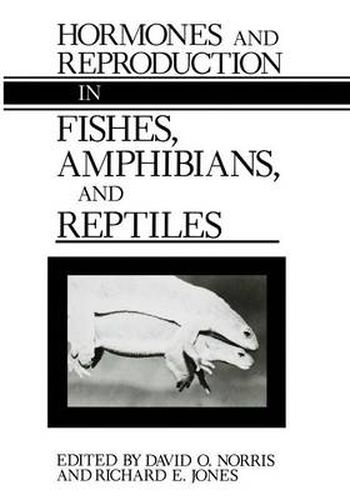Readings Newsletter
Become a Readings Member to make your shopping experience even easier.
Sign in or sign up for free!
You’re not far away from qualifying for FREE standard shipping within Australia
You’ve qualified for FREE standard shipping within Australia
The cart is loading…






This title is printed to order. This book may have been self-published. If so, we cannot guarantee the quality of the content. In the main most books will have gone through the editing process however some may not. We therefore suggest that you be aware of this before ordering this book. If in doubt check either the author or publisher’s details as we are unable to accept any returns unless they are faulty. Please contact us if you have any questions.
Comparative endocrinology is one of the most rapidly developing subdis ciplines within the field of endocrinology, and it is having a significant impact on research at the molecular, cellular, organisma1 and environmental levels. Much of the current ferment in endocrinology is in reproductive endocrinology. The purpose of this volume on hormones and reproduction in fishes, amphibians and reptiles is to summarize our present understandings and to identify important research problems to be addressed in the area of comparative reproductive endocrinology. It was inspired by the gathering at Copper Mountain, Colorado, of eminent endocrine scientists from around the world on the occasion of the Tenth International Symposium on Comparative Endocrinology in July, 1985. While preparing for that meeting, we decided that a special volume on reproductive endocrinology was needed to summarize what is known and to stimulate research in particular directions. Why do we emphasize fishes, amphibians and reptiles? First, knowledge about the reproductive endocrinology of these ectothermic vertebrates can provide a clearer picture of the evolution of reproductive hormones and their effects on target organs. This comparative approach can lead to new theories about the evolution of reproductive control mechanisms. Second, studies concerning the reproductive endocrinology of lower vertebrates can result in development of model systems for application to studies of birds and mammals. Indeed, information about the patterns of reproductive control in ectothermic vertebrates can tell us which are evolutionarily stable and which are labile.
$9.00 standard shipping within Australia
FREE standard shipping within Australia for orders over $100.00
Express & International shipping calculated at checkout
This title is printed to order. This book may have been self-published. If so, we cannot guarantee the quality of the content. In the main most books will have gone through the editing process however some may not. We therefore suggest that you be aware of this before ordering this book. If in doubt check either the author or publisher’s details as we are unable to accept any returns unless they are faulty. Please contact us if you have any questions.
Comparative endocrinology is one of the most rapidly developing subdis ciplines within the field of endocrinology, and it is having a significant impact on research at the molecular, cellular, organisma1 and environmental levels. Much of the current ferment in endocrinology is in reproductive endocrinology. The purpose of this volume on hormones and reproduction in fishes, amphibians and reptiles is to summarize our present understandings and to identify important research problems to be addressed in the area of comparative reproductive endocrinology. It was inspired by the gathering at Copper Mountain, Colorado, of eminent endocrine scientists from around the world on the occasion of the Tenth International Symposium on Comparative Endocrinology in July, 1985. While preparing for that meeting, we decided that a special volume on reproductive endocrinology was needed to summarize what is known and to stimulate research in particular directions. Why do we emphasize fishes, amphibians and reptiles? First, knowledge about the reproductive endocrinology of these ectothermic vertebrates can provide a clearer picture of the evolution of reproductive hormones and their effects on target organs. This comparative approach can lead to new theories about the evolution of reproductive control mechanisms. Second, studies concerning the reproductive endocrinology of lower vertebrates can result in development of model systems for application to studies of birds and mammals. Indeed, information about the patterns of reproductive control in ectothermic vertebrates can tell us which are evolutionarily stable and which are labile.